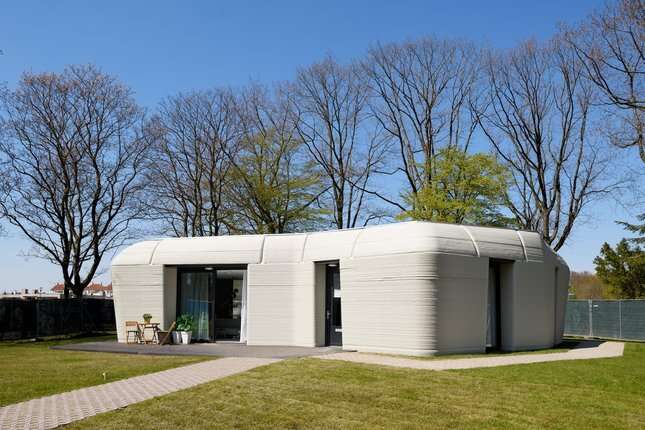Professor Theo Salet of Eindhoven University of Technology (TU/e) is the driving force behind Project Milestone, which is more relevant than ever before due to the housing crisis.
.
An interview with an impassioned man: “We are facing an unprecedented challenge.” It sometimes seems as if freshly printed concrete has a will of its own. The mixture constantly reacts to changes in temperature during curing and tends to collapse like a plum pudding when there is insufficient stiffness. To complicate matters further, the printing process needs to account for inclined walls and the changing weight of the structure. With a little imagination, you can compare concrete printing to walking on a very thin tightrope: you must not print too quickly (the structure then becomes unstable) but also not too slowly (the printed layers will no longer adhere). It’s no small feat.
.
Customization on a large scale Under these difficult conditions, Theo Salet and his team have spent years looking for ways to develop safe, rigid structures through which unique homes with a distinctive character can roll out of […]
Case Study: How PepsiCo achieved 96% cost savings on tooling with 3D Printing Technology
Above: PepsiCo food, snack, and beverage product line-up/Source: PepsiCo PepsiCo turned to tooling with 3D printing...






























0 Comments